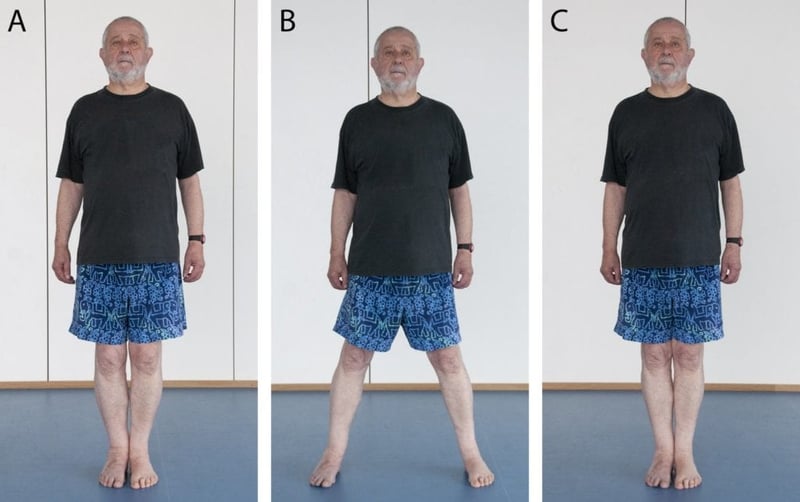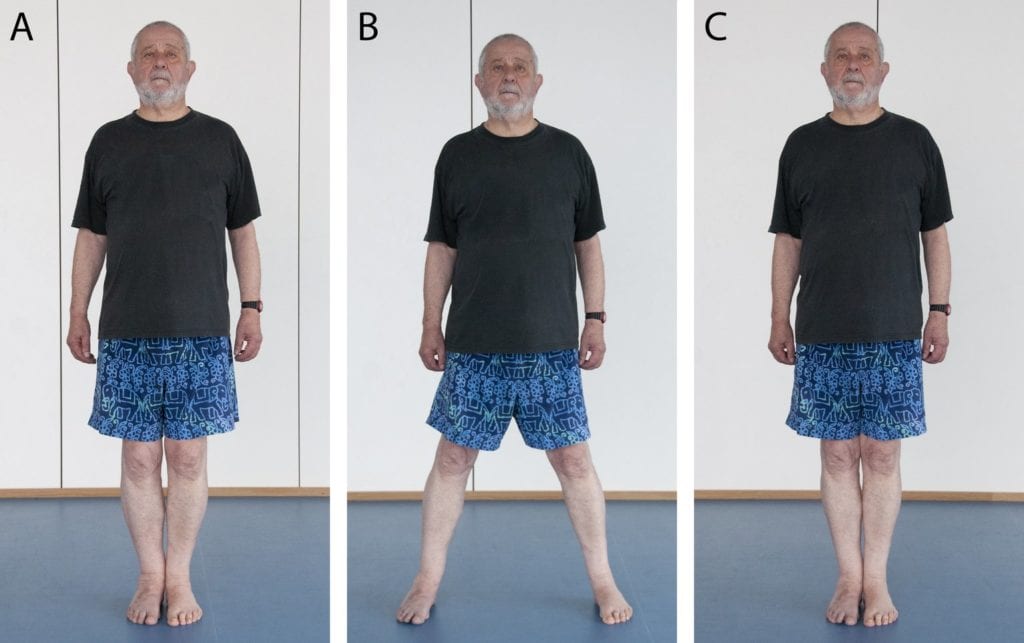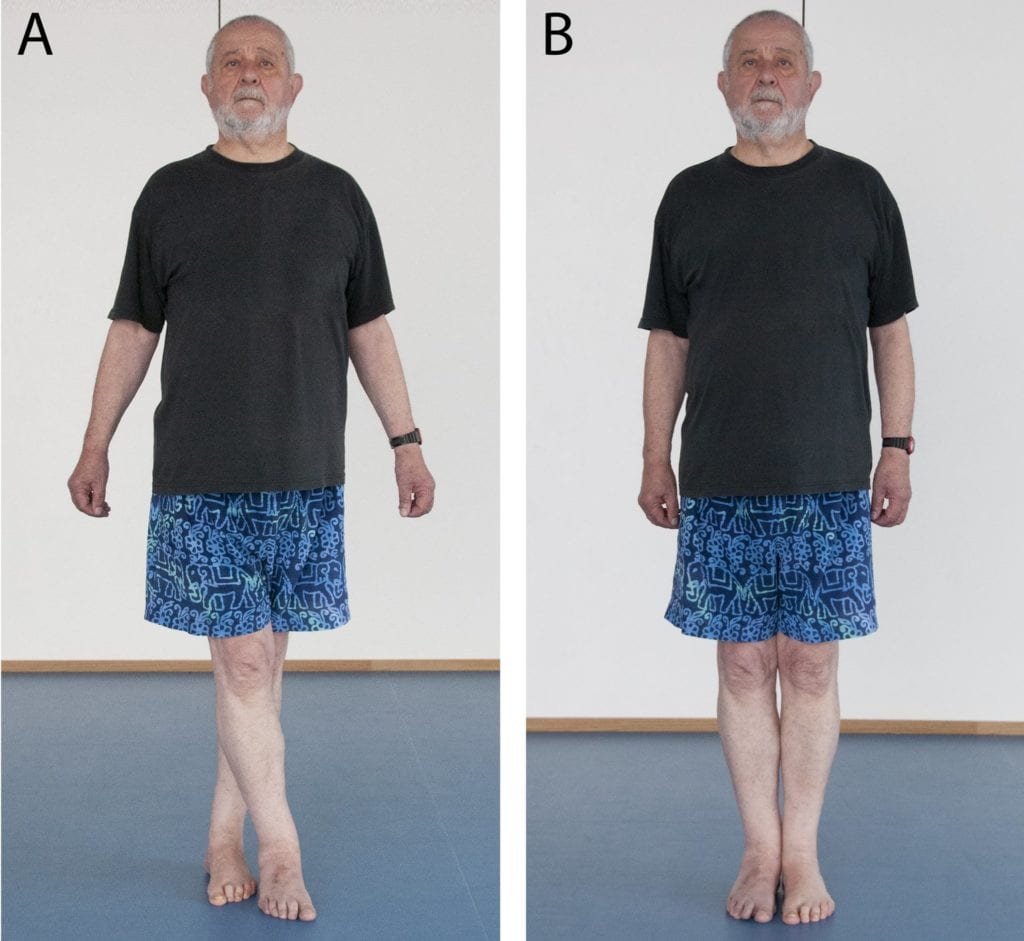
Stannah's occupational health advisor, Helen Stirrup, provides guidance on how stop you feeling unsteady on your feet.
Life is all about balance – but it’s easy to overlook, and take for granted, being steady on your feet.
As you grow older, you may notice you’re stumbling a little more. The fact of the matter is, around one in three UK adults aged over 65 who are living at home, will have at least one fall a year. So, it’s important to take balance seriously when assessing your overall health.
The good news is, you can make simple changes to your routine to improve your balance. In turn, you’ll feel more confident and independent – with the peace of mind that you can move around safely. Here are our 7 recommended ways to better your balance:
Don’t scrimp on sleep
A restful night of between six and eight hours uninterrupted sleep, will work wonders for your general mobility. Not getting enough shut eye can reduce our concentration levels and, if the body is tired, potentially increase clumsiness, resulting in preventable falls. So, to keep your body alert and stable, prioritise getting enough kip.
How’s your hearing?
The inner structure of the ear is responsible for our body’s sense of balance. Therefore, problems like earache or an ear infection may contribute to a balance disorder. If you are experiencing problems with your balance, it is recommended that you have your ears checked by your GP to see if they can pinpoint the cause of your unsteadiness or spot a potential ear issue. Problems with balance from ear issues can manifest themselves through feelings of dizziness, blurred vision and disorientation – whether stood, sat or laid down.
Look after your eyes, too
The inner ear balance mechanism works with the visual system to stop objects blurring when our heads move. These systems prevent us from feeling disorientated when walking, running or driving. Moreover, if you can see clearly, you’ll be able to find – and hold onto – surrounding furniture if you’re feeling unsteady or see trip hazards in your path. As we grow older, our vision starts to deteriorate, so it is a good idea to have regular check-ups with an optician. They may be able to spot some underlying health issues too. Symptoms to be mindful of include; eye pain, blurred or double vision, seeing flashes of light or a “curtain coming down” over one eye.
Find the right footwear
A supportive pair of shoes can really help keep you on your feet, reducing the chance of falls. Sensory feedback (feedback from the nervous system about touch, pain, pressure, temperature, position, movement and vibration) from the hip, knee, foot and ankle is vital in maintaining balance.
While slippers and socks are really comfortable, especially if you have existing foot conditions, their smooth base can cause you to slip. In fact, a recent study found that falls were 11% more likely with slippers or socks on. Therefore, it’s worth wearing shoes in the house or investing in a pair of ‘indoors’ shoes if you’re worried about bringing dirt in from outside. Make sure your shoes fit correctly, as an oversized pair can lead to falls. The best shoe will have a firm sole that’s slip-resistant, a fasting mechanism (Velcro over laces, which can easily come undone), and a very low heel height.
Keep it moving
A strong core equals strong balance. Famous practices such as tai chi, yoga and Pilates have been used to improve balance for years. Core strength really is the key to overall body control, as working on the muscles in your stomach, back and hips can aid effective and safe body movement. These muscles link your upper and lower body to enable you to move in multiple directions and stand still without feeling wobbly.
Have you heard of walking sports? They’re the gentler version of popular sports like football, hockey and basketball, but players walk instead of run. They’re not only a great form of physical exercise, but movement helps release endorphins that boost your mood too. It’s as much about fitness as friendship; walking sports offer a great opportunity to meet new people in later life and with clubs all over the country, there's bound to be a team near you!
There are also a number of gyms who cater to older adults and provide strengthening, and core exercise classes. David Lloyd, for example has committed to having one fitness trainer aged 55+ in each club by the end of 2022 in a bid to encourage active ageing. Gyms can also be perfect places to meet likeminded people, so you can have some social fun through fitness!
Don’t worry though, you don’t need a gym membership to improve your balance. There are many balance-focussed, low impact exercises that you can complete anytime, anywhere without equipment. Mastering these and working them into your everyday routine can be the simplest way of maintaining your postural stability, so why not make it a daily habit?
The NHS has a number of simple balance exercises to get you started. Here are a couple:
Sideways walking

- Stand with your feet together, knees slightly bent.
- Step sideways in a slow and controlled manner, moving one foot to the side first.
- Move the other to join it.
Avoid dropping your hips as you step. Perform 10 steps each way or step from one side of the room to the other.
Simple grapevine

This involves walking sideways by crossing one foot over the other.
- Start by crossing your right foot over your left.
- Bring your left foot to join it.
Attempt 5 cross-steps on each side. If necessary, put your fingers against a wall for stability. The smaller the step, the more you work on your balance.
Adapt the home
Adapting your home to cater to changes in balance will greatly minimise your chances of taking a tumble. Ensure your home is has grab rails especially by steps or slopes, stair rails, clear walkways free of clutter and, if necessary, a stairlift, as stairs are a common culprit for accidents. Using aids such as walking sticks or frames can help and vastly improve your stability whether at home, or whilst out and about. Good lighting is also crucial to aid visibility when you’re moving around the home. Lamps emitting a warm glow aren’t enough – powerful lightbulbs in ceiling lights are worth investing in. Removing rugs is also recommended. Rugs are often implicated in trips and falls.
Our furry friends
Pets are life enhancing in many ways, but an excitable or attentive dog or cat who lingers around your feet can be a hazard in the home. If you find looking after your pet is becoming unmanageable, then speak to family or friends who may be able to help. You can always minimise risk by attaching a bell to their collar so you’re aware of their whereabouts around the home.
Struggling with balance is a completely natural part of ageing, so is certainly nothing to feel ashamed about. Open up to those around you if you feel balance issues are getting the better of you and affecting your quality of life. Speaking to your GP can provide reassurance, but drastic changes to balance sometimes being a side effect of medication, which can be altered. Your GP may also be able to refer you to your local occupational therapist for home adaptations or to a physiotherapy group specifically focusing on falls prevention. So, don’t suffer in silence, as balance problems can be well managed and adapted for.
Care to Share?
Stay up to date
Latest Blogs

Caregiver burnout guide

A stairlift to match your home interior

Little-known gardening laws that could land you a fine of up to £5,000
How to Choose the Best Stairlift Rail

How long will your stairlift last?

Stannah named a Which? Recommended Provider

Servicing Your Stairlift
What is the weight capacity of a stairlift?
Stairlifts made for you
All our stairlifts whether straight or curved are customised to suit you and your home so call now to arrange a visit to get your FREE personalised quote!